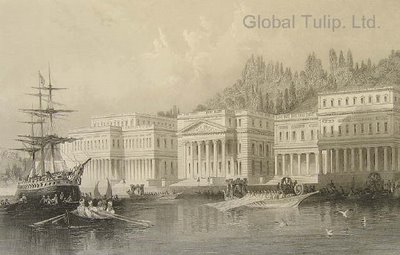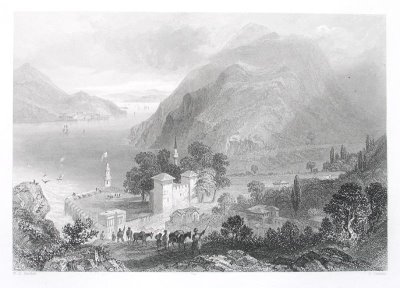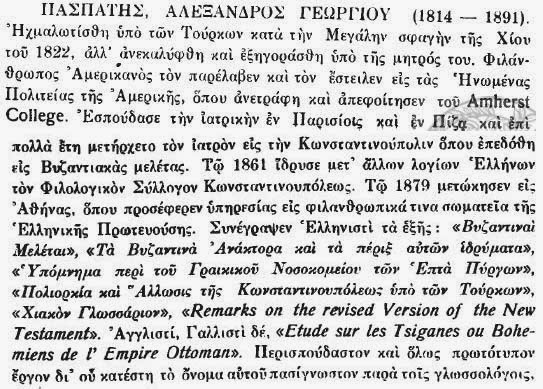Mavi Boncuk |
EU may fail to delight Turkish By Carl Mortished
WE ARE A devious and lustful bunch, we Europeans. Turkey has been asking politely for membership of our club for the best part of two decades. And every time that its candidature is mentioned, we sidestep the question. We said no in 1989 and in 1997 we omitted to name Turkey as an EU accession candidate. In 1999 we finally agreed to address the question and next month the European Commission must provide an answer to Ankara. Only weeks to go, and what do we do? We kick up a fuss about a Turkish law that would make adultery a crime. In defence of the rights of cheating spouses everywhere, we snub the Turks and their old-fashioned values.
There is such dishonesty about the debate over Turkish membership of the EU that the French Government’s position — non à l’islamisation — is welcome in its frankness. France refuses to see Turkey as anything less than an alien invader, a cultural re-enactment of the Ottoman siege of Vienna in 1683. Paris has been forced to swallow anglicisation, the French language relegated in the official business of Brussels. With the prospect of 70 million Turks demanding concessions, the French have drawn their line in the sand. Turkey is, in the words of Valery Giscard d’Estaing, “a different culture, a different approach, a different way of life”.
He is right — Turkey is patriarchal, family-oriented and devout. Europe — as exemplified by the core states of Britain, France and Germany — is materialistic, libidinous and (largely) atheist. One can argue about the stereotypes, but the important assumption is that these distinctions are what the European Union is about. If the EU is a sort of club for adulterous Christians, why do the family-friendly Turks wish to join?
There are economic benefits, in theory. Businessmen in Ankara and Istanbul crave more access to EU markets, and, in particular, to Europe’s capital markets. With closer ties, Turkey’s boom-and-bust economy will be tamed, they hope.
There is also the honeypot. EU membership would provide access to structural funds and the Common Agricultural Policy (CAP). The Centre for European Policy Studies estimates that if Turkey were a member today it would receive €9 billion (£6 billion) in CAP receipts plus €8 billion in structural funds. After deducting its theoretical contribution to the budget, Turkey might receive €16 billion annually from all of us.
Of course, no one believes a word of it. Turkey, under Prime Minister Recep Tayyip Erdogan, has about as much hope as Syria of extracting so many billions from Brussels. By the time that Turkey might expect to join the EU, in 2015, the CAP will be a much-shrunken beast. The spectre of a vast army of indigent farmers from Anatolia will be more than enough to kill off agricultural subsidies. (And it is in part this political reality that drives support for the Turkish candidacy in Whitehall, just as it motivates rejection in the Elysée Palace.)
To make matters worse, membership will foist a jungle of regulation on Ankara, legislation that will not just befuddle bureaucrats but drive to distraction every street-corner kebab seller, every bath-house and every butcher as they seek to comply with EU strictures about public health and hygiene. A World Bank investigation into the cost of bringing Turkey up to EU environmental standards put the bill at between €28 billion and €49 billion, representing up to 2.5 per cent of GDP over 18 years, a huge challenge.
Is it worth it? The answer —depends on where you come from. For sophisticated europhiles in Istanbul, the EU is not a dry economic union but a statement about who they think they are. For them the EU is a cultural and political union, the second act of the play written by Kemal Ataturk, who first pointed Turks westwards at the start of the last century. The EU enthusiasts in Istanbul have no more in common with Turkey’s rural and religious poor than do the lounge lizards in Paris who would defend Christian civilisation from the scourge of biblical morality.
For those who love Turkey, and they include this writer, it is a pity that champions of its EU membership are not counted among supporters of the European ideal. Instead, Turkey’s fan club is led by the cynics in Whitehall. They welcome Turkey, not as a fellow European but as the Trojan horse that will stifle further calls for integration. With Turkey casting the largest vote in the Council of Ministers, political union is surely dead.
It raises the question, what is in it for Ataturk’s children?
carl.mortished@thetimes.co.uk
http://business.timesonline.co.uk/article/0,,8210-1284282,00.html

 Jean-Joseph Benjamin-Constant (10 June 1845 – 26 May 1902), was a French painter and etcher best known for his Oriental subjects and portraits.
Jean-Joseph Benjamin-Constant (10 June 1845 – 26 May 1902), was a French painter and etcher best known for his Oriental subjects and portraits.































.jpg)
.jpg)









